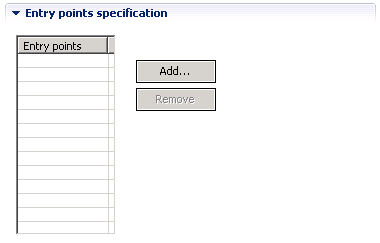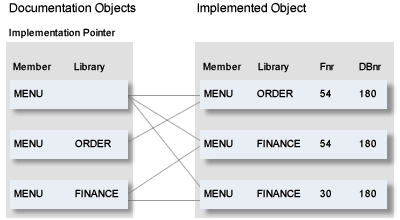Standard maintenance functions are described in the section Maintenance in Predict in the Predict Reference documentation.
This document covers the following topics:
To edit the lists of entry points use the Entry points specification section.

The table below lists the program types permitted for a program written in a particular language and indicates whether the program can have a list of entry points. In third generation languages, marked * in the table below, functions and subprograms can be documented as programs of type F and N respectively, but any active references for these programs will have type P (main program). The active references of these programs will be correctly connected in the active retrieval functions to programs of types P, N and F.
| Language | Permitted Program Types | Entry Points allowed? | |
|---|---|---|---|
| B | BAL (Assembler)* | C D F I N P U | yes |
| C | COBOL* | C D F I N P U | yes |
| E | Natural EL | D Y | no |
| F | FORTRAN* | C D F I N P | yes |
| G | ADA* | C D F N P | yes |
| H | C* | C D F I N P U | yes |
| J | Job Control Language | D J | no |
| N | Natural | A C D G H I K L M N O P S T X 1 4 5 | no |
| O | Other | C D F H M N P | yes |
| R | Rexx | R | yes |
| P | PL/I* | C D F I N P U | yes |
| Q | Static SQL | D I P | yes |
| S | SQL procedure language | R U | no |
| V | Java | R | yes |
| Z | System program | D E | yes |
| 0 - 9 | user-defined | C D F N P | no |
New languages (code 0 - 9) are defined with the program U-PGMLAN. See the section U-PGMLAN - Define New Program Language in the section User Exits in the Predict Administration documentation.
If the same member is used in several libraries, multiple documentation of this member can be avoided by omitting parts of the implementation pointer. Predict then finds out for itself all the libraries in which this member exists. In the example below, the library name is omitted.

The valid combinations of implementation pointer parameters permitted for Natural programs are shown below.
| Member | Y | Y | Y | Y |
| Library | Y | Y | Y | |
| Fnr | Y | Y | ||
| DBnr | Y |
This function can only be executed for programs of type SQL procedure or Database function with language SQL procedure.